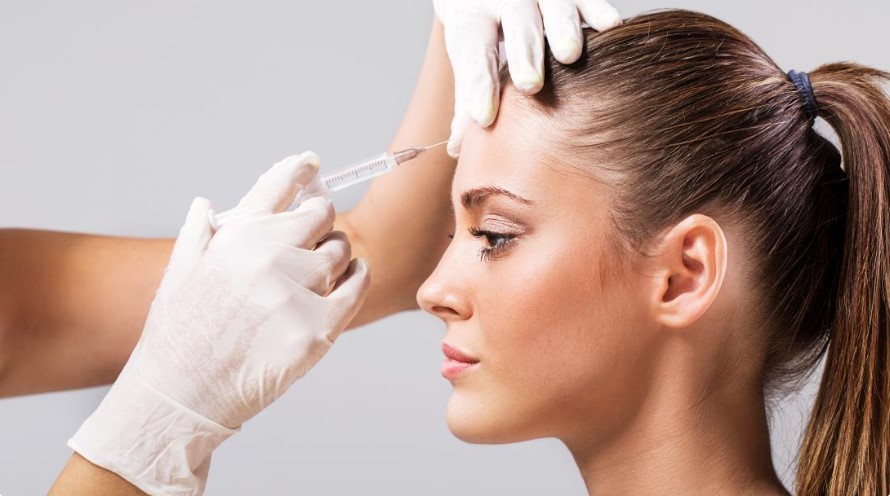Botox is an injectable drug that is actually made from purified botulinum toxin type A. This toxin temporarily (3 to 6 months) blocks the transmission of neurotransmitters to the muscles and paralyzes the muscles.
What are the common side effects of Botox?
It is rare for facial Botox, or topical Botox in general, to cause systemic problems (involvement of the whole body), but there is research showing that sometimes the proteins of this toxin can travel through the nerves to areas where we are concerned. Does not hurt.
It is best to see a doctor immediately if you have any of these symptoms during pregnancy or otherwise:
Some of these side effects, such as headaches and mild nausea, are transient and should not be taken lightly. Your Botox injecting doctor will also give you the necessary warnings.
These side effects are fully explained in detail in the article Facial Botox Side Effects.
Excessive rash (redness), pimples or itching of the skin at the injection site
Inflammation, pain, redness, swelling and bleeding at the injection site
Difficulty swallowing, breathing or talking
• Nausea, stomach pain and diarrhea
Unwanted muscle paralysis or muscle weakness
Drooping eyelids
• Dizziness or feeling too weak
• Dual or blurred vision
Increase or decrease saliva production or sweating
Very severe headache
Sore throat (due to damage to the nerves in the neck area in Botox injections to eliminate neck wrinkles)
• Urinary tract infection (in cases where Botox is used to treat urinary incontinence)
What is Botox used for?
Botox has many uses in medicine, but pregnant women have always had concerns about their fetus when treated with Botox, but before we talk about the side effects of Botox during pregnancy, it is better to know what Botox is used in general.
There are many conditions that botulinum toxin can cure, for example:
• All use Botox in beauty
Some severe migraine headaches
• Treatment of excessive sweating of the palms or armpits
• Some urinary incontinence
• Spasm (severe muscle cramps and contractions) in the neck and shoulders
Some esophageal problems in the digestive system
• And...
How Botox works
Botox neurotoxic proteins temporarily block the transmission of neurotransmitters by blocking acetylcholine neurotransmitters to muscle cells and secretory glands (in cases of excessive sweating) and prevent muscle contraction or secretion of secretory glandular cells. .
When cell contraction is disrupted, it is no longer possible for wrinkles to form, and in this way, the wrinkles and fine lines of the crow's paw next to the eye gradually disappear.
The good news in this process is that it only takes a few hours or a maximum of a few days for Botox to work, and this effect is local and does not involve the whole body (it is not systemic).
Depending on the area injected and the amount of injection and the brand of the product consumed, this toxin has its effects from 3 to 6 months.
What are the side effects of Botox in pregnancy?
As mentioned, Botox injections have only local effects and so far no report of transfer of Budtax toxin from mother to fetus has been reported. In addition to the side effects of Botox during breastfeeding, some research has shown that the proteins that make up this toxin are too large to cross the placenta and enter the fetus and do not harm the fetus, but it is still recommended that women Pregnant and lactating women should avoid using Botox.
But injecting Botox in high doses can be dangerous for people who are particularly allergic to these chemicals. In cases of injection of high doses, the person becomes poisoned (botulism disease), which from small effects to life-threatening effects can be in the range of complications of this poisoning.
What are the foods that normally contain botulinum toxin?
In discussing the side effects of Botox in pregnancy, it is better to mention in general the cases that may contain Botox toxin. The importance of this issue is to consume these foods more carefully if you are pregnant or breastfeeding. In addition, it is recommended that infants be avoided because they are more vulnerable to botulinum toxin poisoning without the presence of parents.
Common foods that may be high in botulinum toxin:
Tuna
Honey
Canned fruits and vegetables
Keep food warm or refrigerated for a long time
Baked potatoes are packed
Packaged (canned) garlic
Fermented fish and meat
Infectious wounds Infectious wounds also increase the possibility of increased botulinum concentrations.

